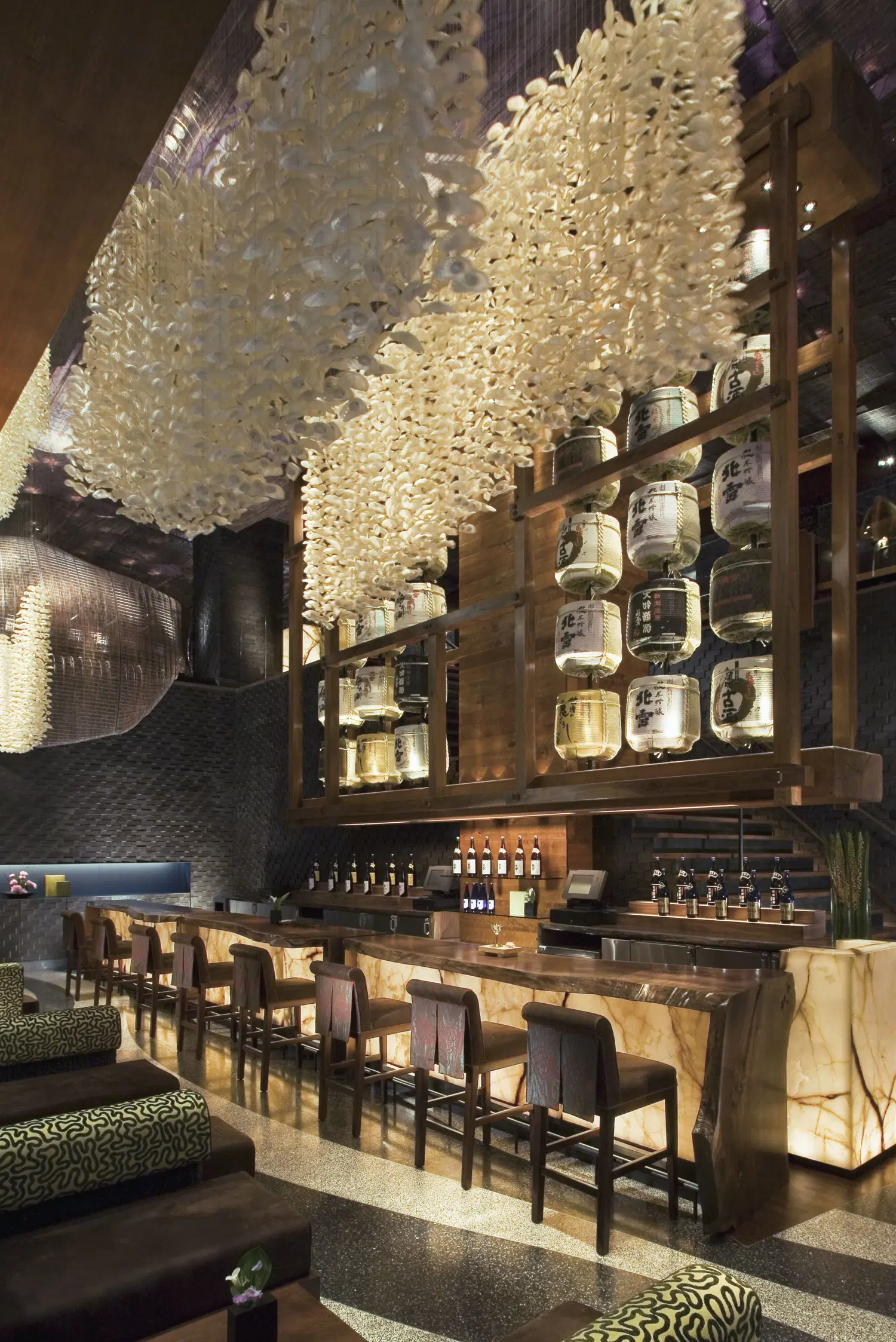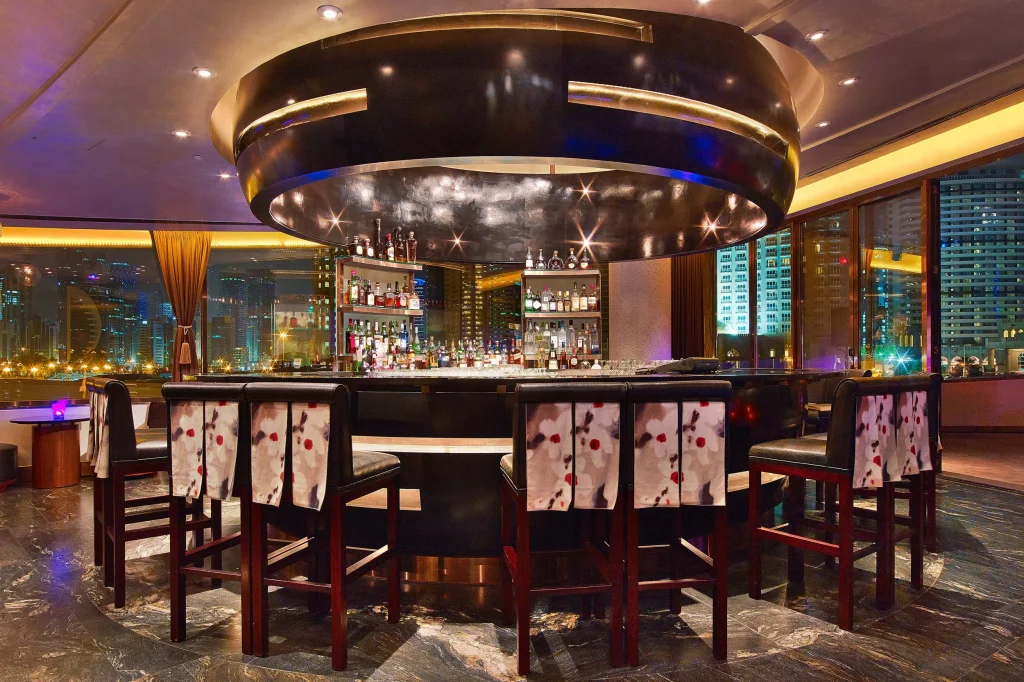Meet the Rockwell group
Designing a World of Nobu
PROFESSION Partner Rockwell Group
RESIDENCE New York City
Project W Hotel New York, Sandblu Santorini, Seda Club
Hotel Grenada, The Ritz-Cartlon Residences West
Palm Beach, Prince Gallery Tokio,
Nobu Downtown, Nobu Hotel Atlanta, Nobu Hotel Barcelona
Shawn Sullivan

Rockwell Group
Can you tell us more about the Rockwell Group and their connection with Nobu?
As a chef, Nobu-san is nothing short of visionary. From the beginning, he redefined the global dining experience by blending culinary cultures into something entirely his own. In 1994, we were invited to design the first Nobu restaurant in Tribeca. It was a blank canvas, but the philosophy was clear: precision, poetry, and presence. When we later designed Nobu Fifty Seven in Manhattan, we took that story further, introducing warm timber, woven textures, hand-thrown ceramics and lighting as architectural rhythm. That became a visual language we’ve continued to evolve across more than 45 Nobu restaurants and hotels worldwide.
What elements of the Nobu brand and culinary philosophy inspired your architectural approach?
Every Nobu tells a local story, grounded in place but elevated by global elegance. Amsterdam -a city shaped by water, light, and craft- offers a new chapter. The restaurant’s position overlooking the park invites a design inspired by the landscape: soft, flowing forms, natural tones, and materials that speak both to Japanese restraint and Dutch ingenuity. From the very first Nobu, narrative was essential, whether through river stone walls or cherry blossom stencils. This layered storytelling remains a guiding principle: design that echoes Nobu’s cuisine, unexpected yet deeply intentional.
How does the design of this Nobu location stand out from others around the world?
Amsterdam is a city of makers. For Nobu Amsterdam, we’re collaborating with local artisans to create custom furniture, textiles, and artworks that echo centuries of shared craftsmanship between the Netherlands and Japan. No two Nobus are alike, and this one will be unmistakably its own.
a space designed to be discovered, not just entered.

What emotions or experiences do you want guests to have when they enter and dine at the restaurant?
There’s a Dutch word — gezellig — that captures something profound. A sense of warmth, intimacy and connection. That feeling of being in the right place at the right time, with the right people. That’s the atmosphere we’re designing for. Not just visual comfort, but emotional resonance.
How are you balancing Nobu’s signature elegance with local cultural or architectural influences?
The Netherlands and Japan have a long and layered history of exchange — trade, technique, even taste. We’re honouring that heritage through tactile, timeless design. Think: Japanese joinery meets Dutch cabinetry. Wabi-sabi meets water management. Local influences are not added on — they’re woven into the fabric of the space.
What role does lighting and spatial flow play in enhancing the dining experience at Nobu?
Lighting is our invisible architecture. It sculpts the atmosphere, elevates the food, flatters the guests, and defines the tempo of the evening. Every light fixture is custom-made, often inspired by traditional Japanese lanterns or crafted by local artisans.
The choreography of space — how a guest moves through the restaurant — is equally intentional. Every threshold, every curve, every line of sight is considered. From first impression to final moment, the journey must feel effortless and intuitive.
In a single sentence, how would you define the essence of this restaurant’s design?
Nobu Amsterdam is a quiet conversation between two cultures, expressed through light, craft, and culinary rhythm — a space designed to be discovered, not just entered.
What is your favorite restaurant in the world?
Nobu Bangkok holds a special place for us. It’s the largest Nobu to date, but still manages to feel intimate — with tearooms, event spaces, and that unforgettable open-sky bar overlooking the Chao Phraya River. It’s a fusion of Thai vibrancy and Nobu serenity — a testament to what happens when architecture, cuisine, and culture are in complete harmony.
